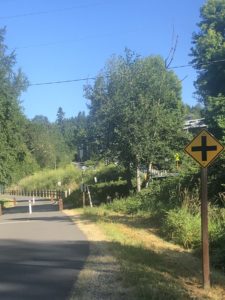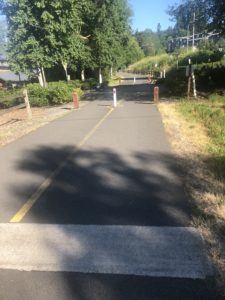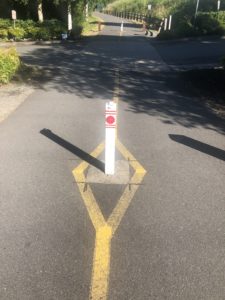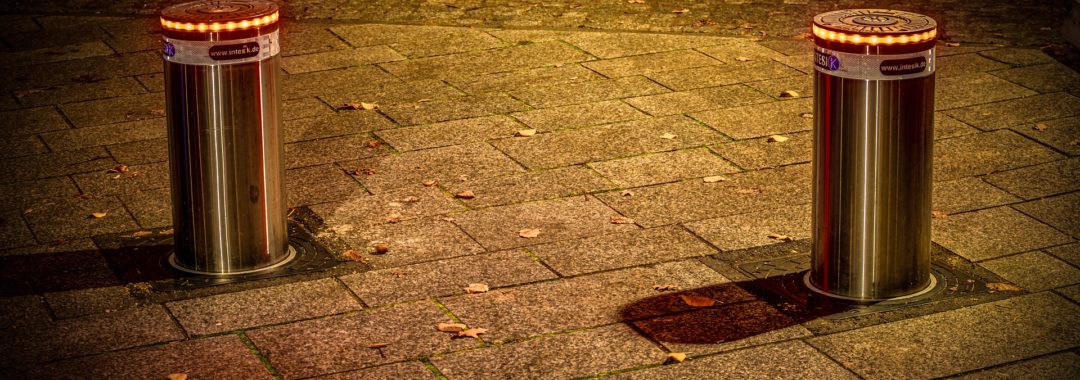Recently my wife and I visited a park and driving into the lot we saw an ambulance and a crowd gathering around. We elected to leave the area and go to a different park.
Days later we returned to the park. I noticed a large, fresh plug missing from a wooden bollard. The bollard is on a paved trail. Many bollards on improved trials are marked—the pavement approaching is painted with lines to alert people (especially cyclists) of the presence of the bollard. This bollard was unmarked, and there is a bend in the trail as you approach the bollard, obscuring the approach. The damage in the bollard faces the bend in the trail (not the street cross-walk on the other side).
I have no idea if the damage to the bollard is related to the ambulance scene days earlier, but it made be recall a recent Court of Appeals case involving serious injury to a cyclist who struck an unmarked bollard. (To be clear, we did not participate in this case.)
In that case the cyclist was rendered a quadriplegic. The City of Mercer Island through its counsel deliberately hid information about other bicycle-bollard accidents, including at the same unmarked bollard, and falsely claimed “there are zero reports connected to [the] accident site.” A King County judge imposed $10,000 in sanctions, which was upheld on appeal.[1]
It may seem that a bollard is hard not to see, and if the trail is not busy that is true. But trails are often busy with joggers, walkers, and baby strollers. If a cyclist passes other people the cyclist might not be aware (and have no way of being aware) of the bollard on the other side of the people until it is too late.
The American Association of State Highway and Transportation Officials (AASHTO) in its publication, Guide for the Development of Bicycle Facilities, recommends that bollards not be used unless “there is a documented history of unauthorized intrusion by motor vehicles.” Where bollards are used AASHTO emphasizes that bollard placement should provide adequate sight distance to allow users to adjust their speed to avoid hitting them, and bollards should have a stripping envelop around the approach, as seen in the photos below.
If you have questions about personal injury related to bollard hazards consult with an attorney.
[1] Camicia v. Cooley, 74048-2-I (Wash. Ct. App. Div. I, February 21, 2017).



